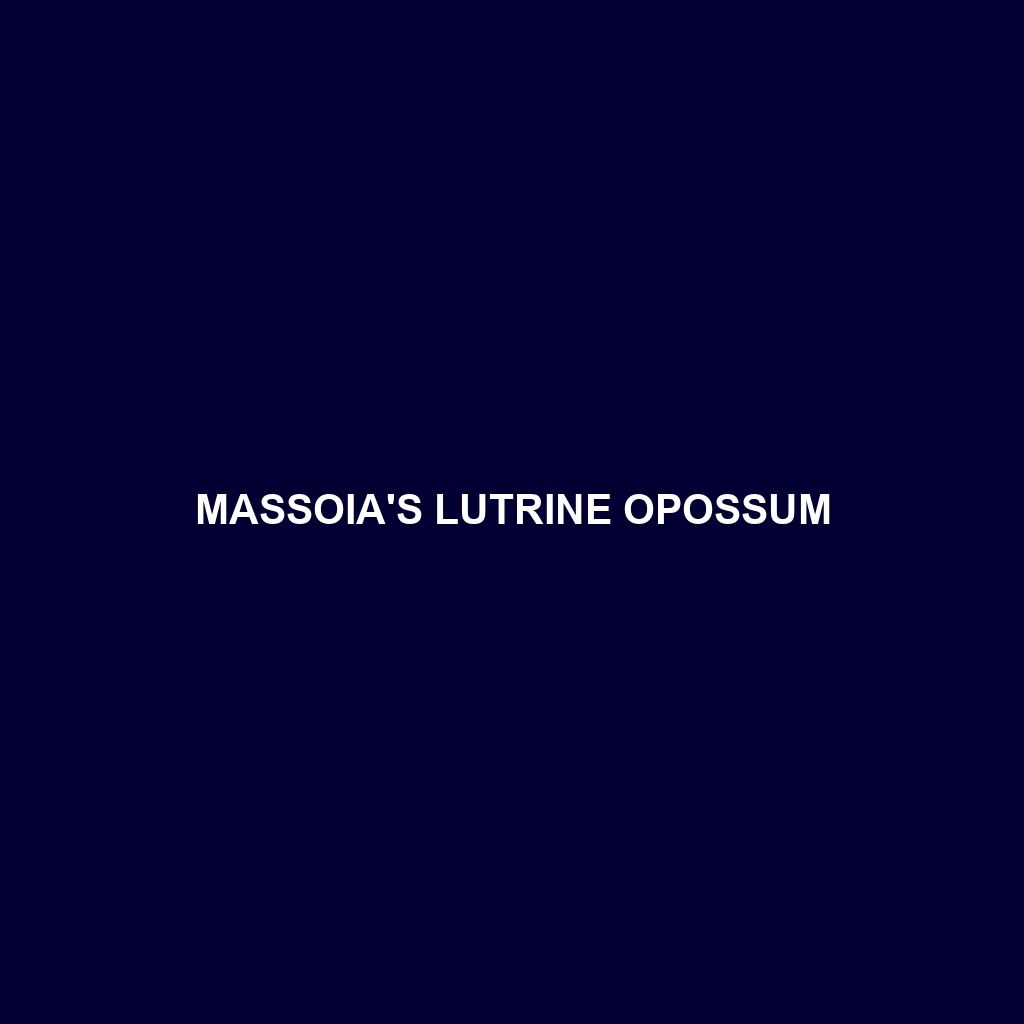Massoia’s Lutrine Opossum: A Comprehensive Overview
Massoia’s Lutrine Opossum (Lutreolina massoia) is a fascinating and relatively obscure marsupial native to South America. Known for its otter-like appearance and semi-aquatic lifestyle, this nocturnal creature is an exceptional example of adaptation in the mammalian world. Found primarily in wetlands and riverine environments, Massoia’s Lutrine Opossum plays an essential role in its ecosystem, contributing to the balance of aquatic and terrestrial food webs.
Physical Characteristics:
Size: Adult Massoia’s Lutrine Opossums generally measure between 30 to 45 centimeters (12 to 18 inches) in body length, with an additional tail length of around 25 to 35 centimeters (10 to 14 inches). They typically weigh between 500 to 800 grams (1.1 to 1.8 pounds).
Coloration: Their fur is dense and water-resistant, primarily consisting of a rich brown or reddish-brown color on their dorsal side, with a lighter, creamy or grayish color on the ventral side. This coloration aids in camouflage within their natural habitats.
Special Features: One of the most distinguishing features of Massoia’s Lutrine Opossum is its partially webbed feet, which facilitate efficient swimming. Their long, prehensile tail is another notable adaptation, allowing them to grasp branches and stabilize themselves while navigating through their environments.
Behaviors:
Social Interactions: These opossums are generally solitary creatures, coming together primarily during the breeding season. While not highly social, they communicate through vocalizations and scent markings to establish territories and attract mates.
Feeding Habits: As omnivores, Massoia’s Lutrine Opossums have a varied diet that includes small mammals, birds, amphibians, insects, and aquatic invertebrates. They are also known to forage for fruits and other plant materials, making them versatile feeders adept at exploiting diverse food sources.
Ecological Roles: Massoia’s Lutrine Opossum serves as both predator and prey within its ecosystem. By controlling populations of small aquatic and terrestrial organisms, they contribute to maintaining ecological balance. Additionally, they act as prey for larger predators, thus integrating into the broader food web.
Habitats and Adaptations:
Habitats: These opossums are typically found in wetlands, marshes, riverbanks, and other areas with abundant water sources. They favor dense vegetation that provides cover and access to both terrestrial and aquatic environments.
Adaptations: Their semi-aquatic nature is supported by several adaptations, including webbed feet for swimming, water-resistant fur, and a strong, flexible tail for maneuvering through water and climbing. Their acute sense of smell and night vision are essential for nocturnal hunting and foraging.
Conservation Status:
Currently, Massoia’s Lutrine Opossum is not classified as endangered, but its conservation status requires monitoring due to habitat destruction and environmental changes. Wetland drainage, pollution, and climate change pose significant threats to their habitats. Conservation efforts focus on preserving wetland ecosystems and promoting sustainable land-use practices to ensure the survival of this unique species.
Fascinating Fun Facts:
1. Misleading Name: Despite being called the “Lutrine Opossum,” these creatures are not closely related to otters but have evolved similar lifestyles and adaptations due to convergent evolution.
2. Marsupial Pouch: Like other marsupials, female Massoia’s Lutrine Opossums have a pouch where they carry and nurse their young until they are fully developed.
3. Nocturnal Lifestyle: These opossums are primarily active during the night, using their enhanced night vision and keen sense of smell to navigate and hunt in the darkness.
4. Climbing Skills: Although semi-aquatic, they are also adept climbers, often scaling trees and shrubs in search of food or to escape predators.
Massoia’s Lutrine Opossum is a remarkable example of nature’s adaptability, showcasing the intricate balance of life within South America’s wetland ecosystems. Through understanding and protecting this species, we gain insight into the broader health and dynamics of their natural habitats.
